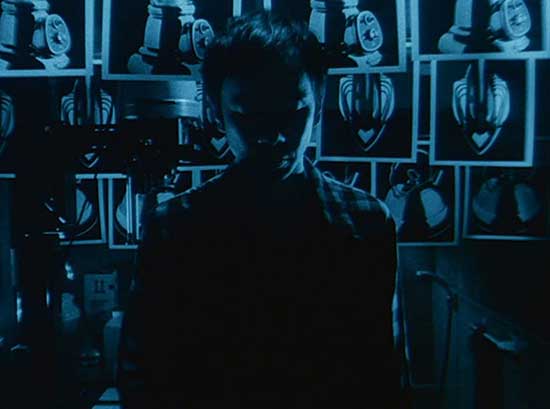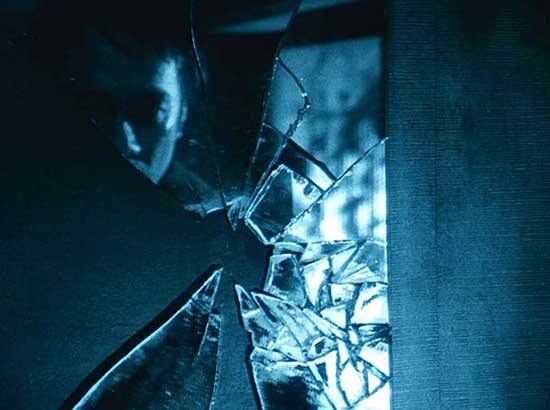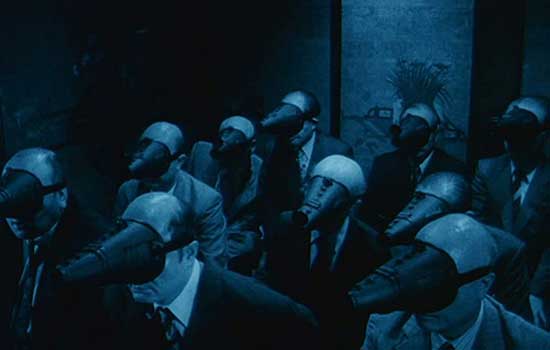SYNOPSIS:
A woman is being stalked by a stranger. His stalking turns to blackmail when he sends her copies of photos of her in an embarrassing position. Now he controls her and she has to do anything he says. Anything.
REVIEW:
While the name Shin’ya Tsukamoto is without a doubt most synonymous with the Japanese cyberpunk movement and his earlier works such as Tetsuo or Denchû kozô no bôken are remembered for their unique take on body horror as well as the use of stop motion, dizzying speeds of editing and the experimental take on storytelling. However, the themes of mutation and bodily transformation are not the only thematic aspects of his work and in the background of nearly every film lies a story about the family unit, or more precisely, about couples. Never is this quite as true as in his 2002 erotic masterpiece A Snake of June. It is an intimate peek at one woman’s journey out of sexual repression, but also weirdly, a love story. It is fantastically salacious, beautifully executed and just on the right side of bizarre.
The story follows a mental health counsellor Rinko Tatsumi (Asuka Kurosawa), whose marriage to much older, hygiene obsessed Shigehiko (Yûji Kôtari) has run out of steam. Shigehiko is more interested in cleaning their marital home and its various sinks than spending time with his wife, leaving Rinko very frustrated as a result. However, her mundane routine of helping troubled individuals over the phone and arguing about cleaning with her husband is about to get rudely interrupted by a package containing photos of Rinko masturbating in front of a window. Soon she receives a phone call from a mysterious stranger (Tsukamoto himself) promising to return all the photos and their negatives if Rinko complies with his requests. Otherwise her husband will be receiving the photos instead. Not knowing what else to do, Rinko soon finds herself performing the strangers request of parading around town in an obscenely short skirt, buying a vibrator and letting the stranger use it on her via remote control. Meanwhile she has also received a devastating diagnosis of breast cancer, to which her useless husband reacts in the worst possible way. All this upheaval combined leads to a strangely beautiful story of sexual self-discovery and a reunion of two lovers once lost to each other.
Voyeurism, blackmail, sexual humiliation. A Snake of June has the elements of being something quite sleazy. However, it is anything but. Instead Tsukamoto has woven an elegant piece of erotica where the boundaries of love, lust and obsession mix together in a deliciously tantalizing fashion. The setup of the story brings to mind classics of erotic literature such as Pauline Réage’s Story of O, or the wonderfully lewd Click-series by the Italian comics book artist Milo Manara, where sexual awakenings are explored through degradation, pain and submission.
Unlike you might expect, this bizarre stranger is not merely targeting Rinko for his own pleasure, but very much for Rinko’s as well. In fact, rather than the blackmailers own sexual gratification, the main aim of this exercise seems to be Rinko’s sexual liberation. While reluctant at first, complying with the demands of her mystery blackmailer ends up being the final push that the frustrated Rinko needs in order to fully explore and express her pent-up sexuality and the tasks that first make her quiver with anger and humiliation end up being the act of emancipation that she so badly needs. Even more, this stranger is not here to break up a marriage, but rather to mend it. In the end this bizarre love triangle ends up being the kick up the arse Rinko and Shigehiko’s marriage needs, and the two come together as lovers they once were.
Tsukamoto has executed this story of erotic exploits in his own trademark style. The beautiful monochromic images are carefully framed and similar imagery (in this case circles) are returned to over and over again. From the constant rain (June is the start of the rainy season in Japan), to the bizarre erotic peepshows where the performers get drowned, the ruling element of the story is water. Even Rinko’s skin is continuously covered in little droplets of sweat or rain, cementing the steamy atmosphere even further and creating a continuous erotic charge to the film. The modernist concrete house that our main protagonists inhabit is completely without hint toward anything traditionally Japanese, leaving the main stage alluringly unadorned; like it exists in its own place and time. The editing may not be as hectic as in Tsukamoto’s earlier cyberpunk works, but the same style is still very much present, revealing its beautiful chaotic self in opportune moments. Even Tsukamoto’s usual tropes of mechanical horrors make a brief appearance, with the stranger attacking Shigehiko with a mechanical tentacle, or a snake. The scenes of Rinko’s sexual encounters are conducted in a stylish manner and instead of explicit nudity or graphic content, the scenes mostly focus on her face, helping to tell the story of her sexual awakening at much more intimate level.
With A Snake of June, the body horror that is so synonymous with Tsukamoto’s work has stepped aside for a gentler way of exploring the human body, with an ending, that unlike most of his earlier works, leaves a rather hopeful and a positive sentiment in its wake. Nevertheless, the intensity and the ambience are still pure Tsukamoto, sucking you into the bizarrely unique universe only he could ever imagine into existence.
 Horror News | HNN Official Site | Horror Movies,Trailers, Reviews
Horror News | HNN Official Site | Horror Movies,Trailers, Reviews














